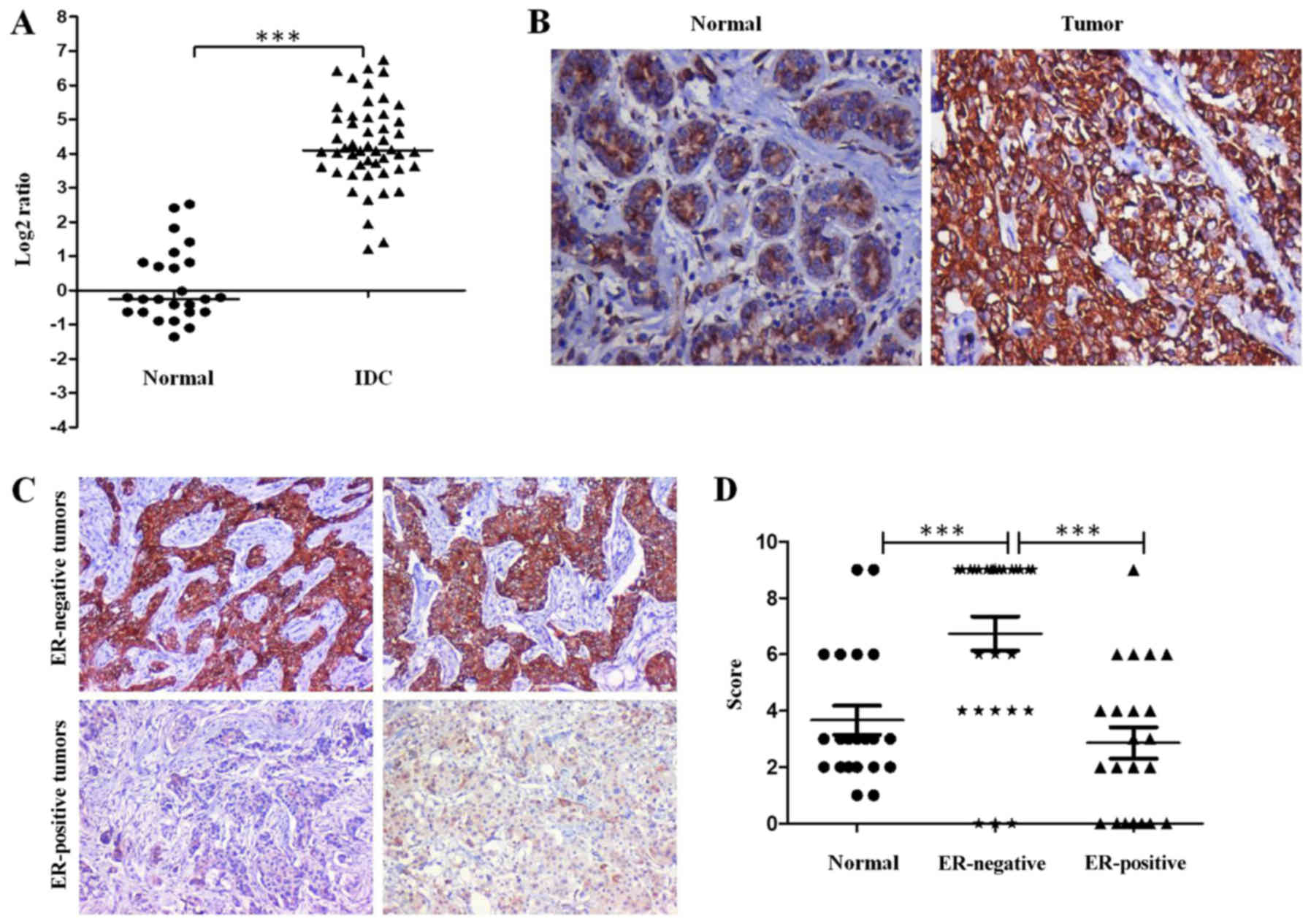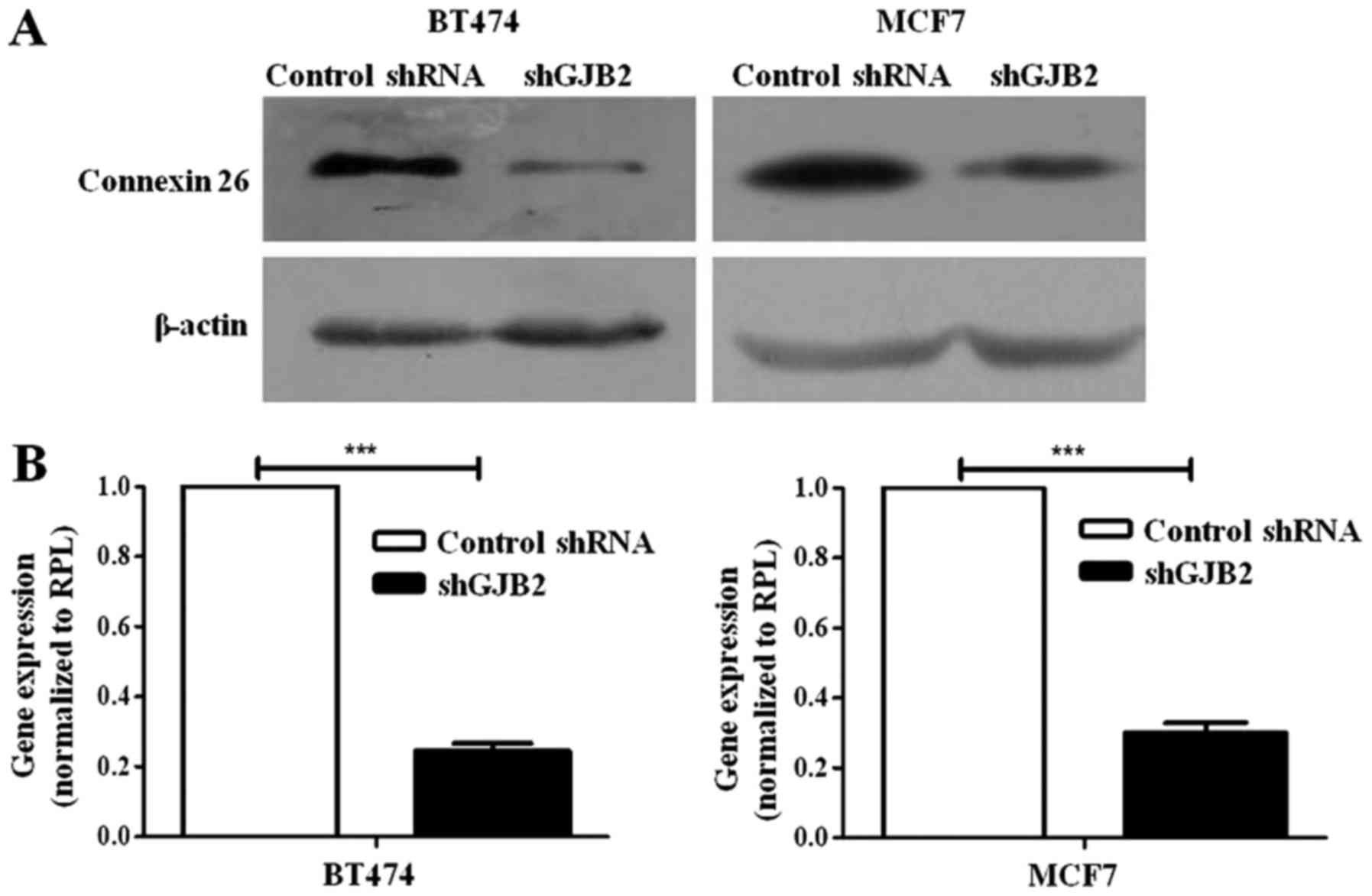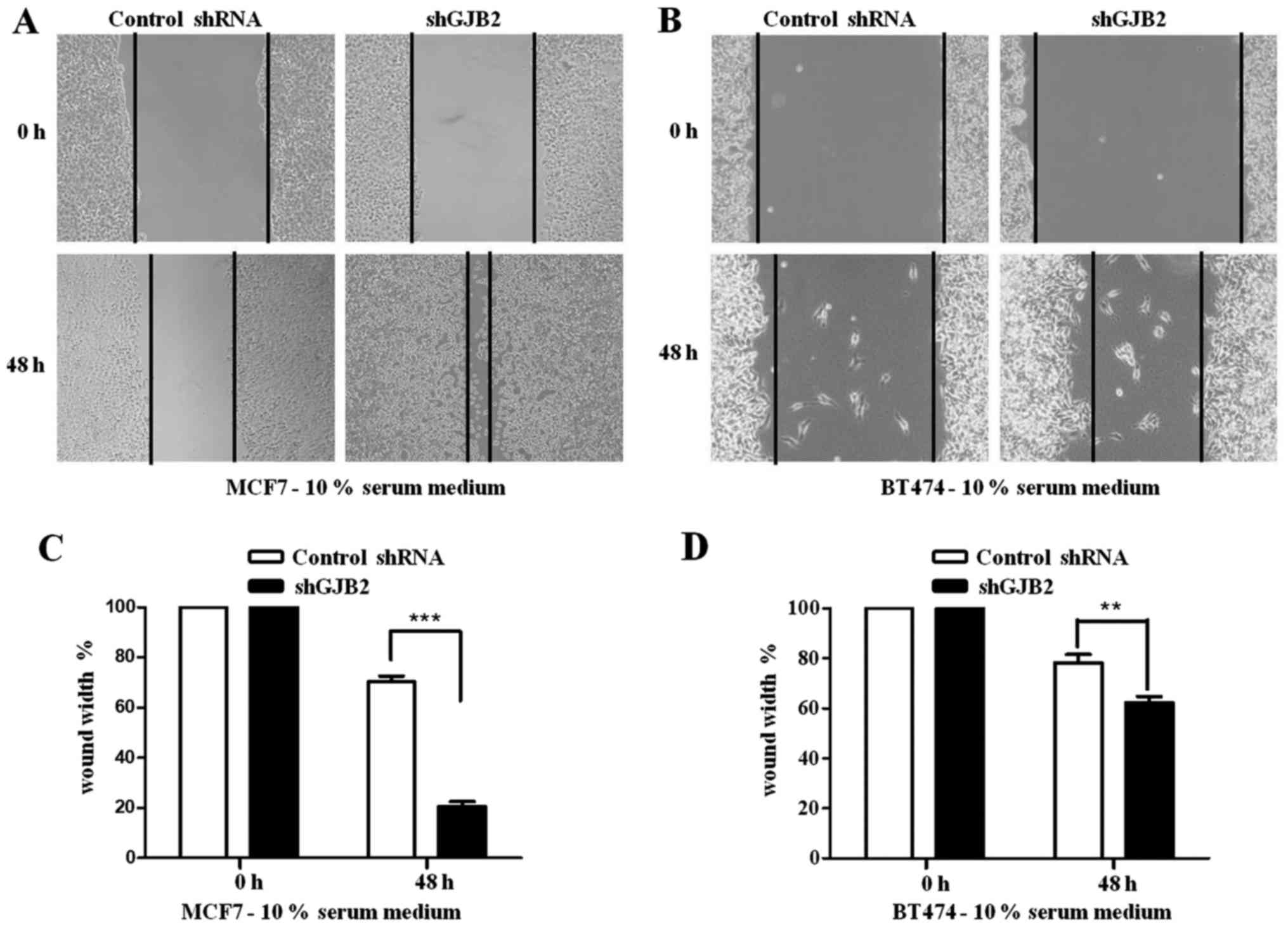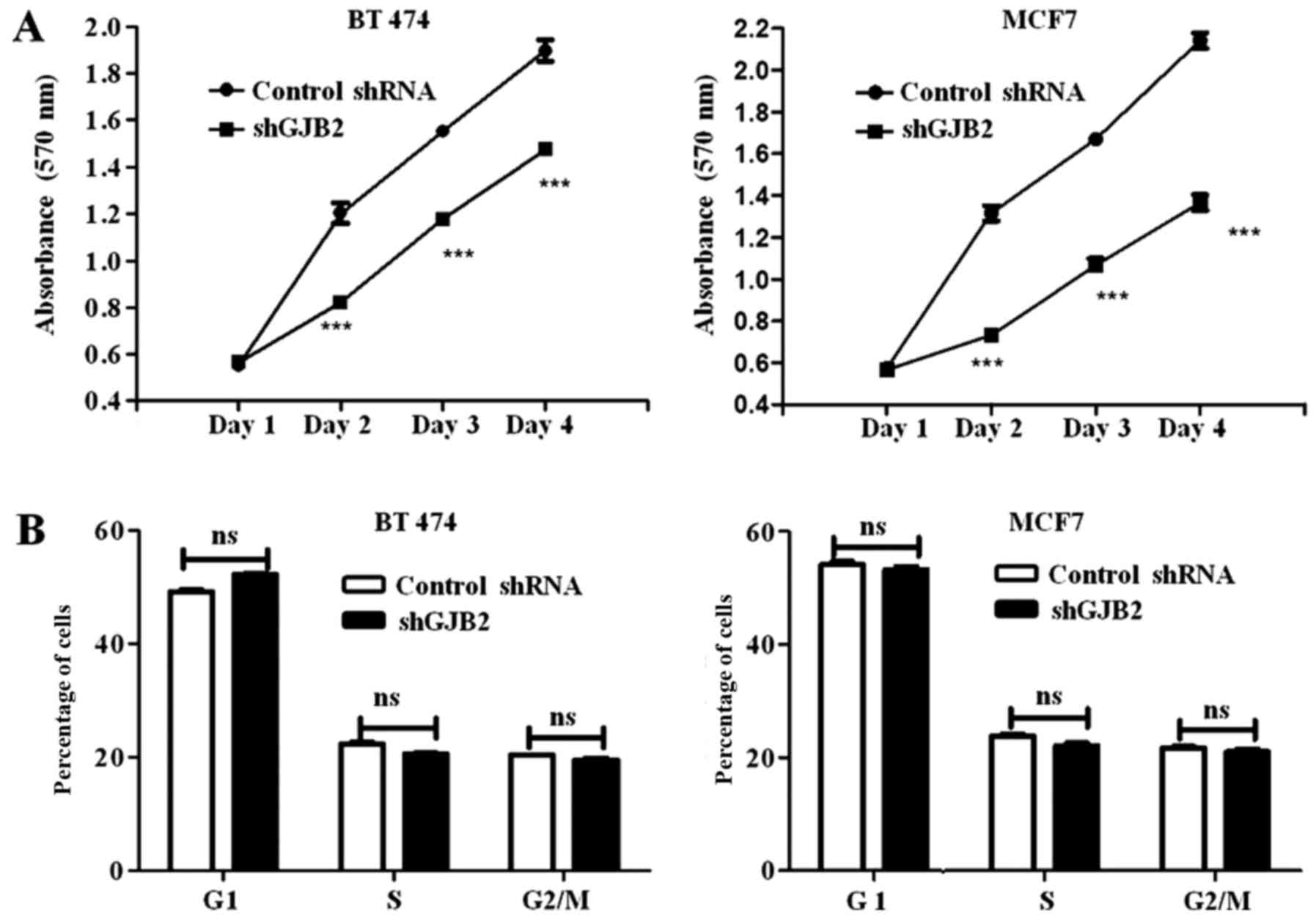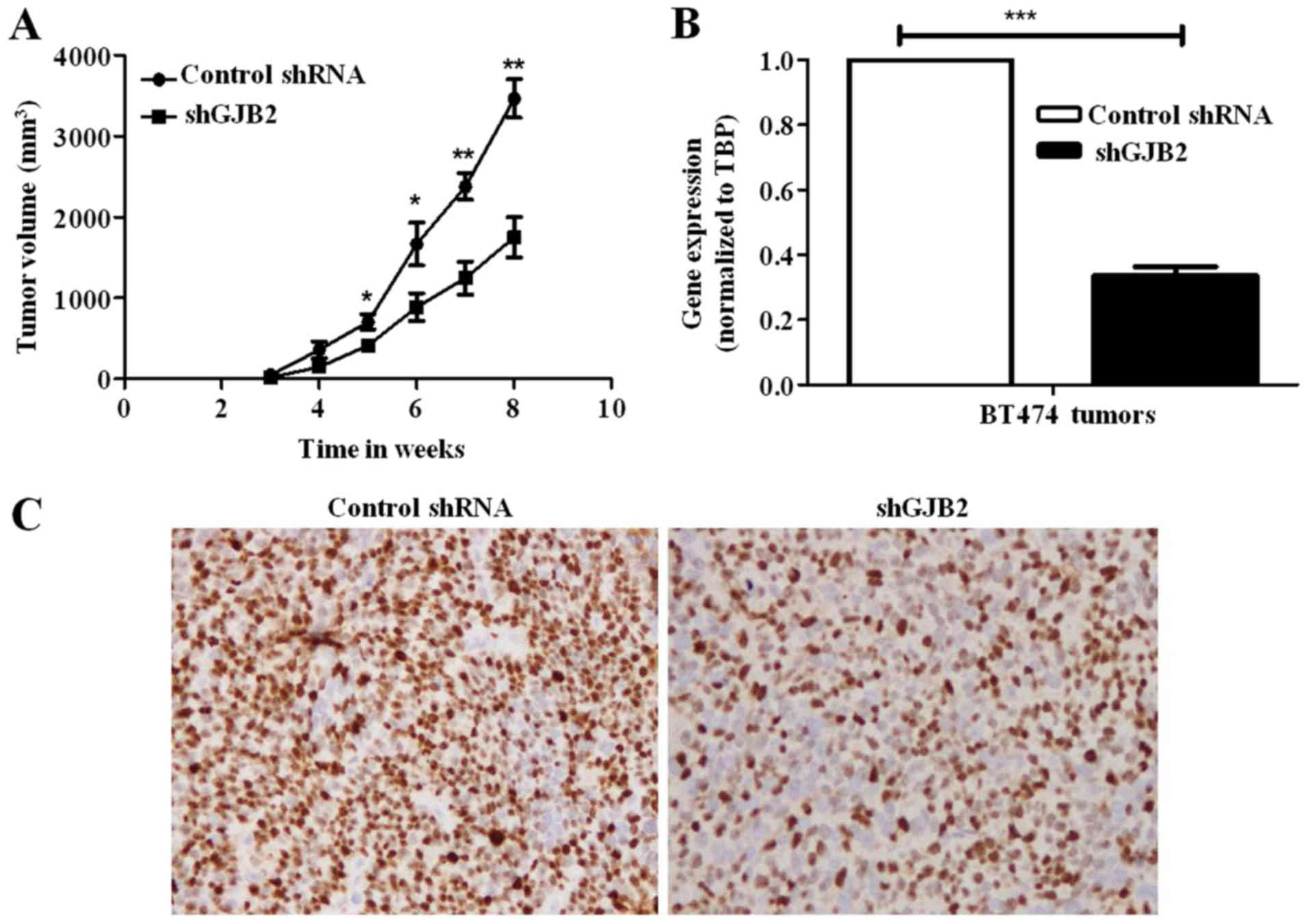|
1
|
Charles AC, Naus CC, Zhu D, Kidder GM,
Dirksen ER and Sanderson MJ: Intercellular calcium signaling via
gap junctions in glioma cells. J Cell Biol. 118:195–201. 1992.
View Article : Google Scholar : PubMed/NCBI
|
|
2
|
Monaghan P and Moss D: Connexin expression
and gap junctions in the mammary gland. Cell Biol. 20:121–125.
1996.
|
|
3
|
Goodenough DA, Goliger JA and Paul DL:
Connexins, connexons, and intercellular communication. Annu Rev
Biochem. 65:475–502. 1996. View Article : Google Scholar : PubMed/NCBI
|
|
4
|
Zhu D, Caveney S, Kidder GM and Naus CC:
Transfection of C6 glioma cells with connexin 43 cDNA: Analysis of
expression, intercellular coupling, and cell proliferation. Proc
Natl Acad Sci USA. 88:1883–1887. 1991. View Article : Google Scholar : PubMed/NCBI
|
|
5
|
Naus CC, Elisevich K, Zhu D, Belliveau DJ
and Del Maestro RF: In vivo growth of C6 glioma cells transfected
with connexin43 cDNA. Cancer Res. 52:4208–4213. 1992.PubMed/NCBI
|
|
6
|
Eghbali B, Kessler JA, Reid LM, Roy C and
Spray DC: Involvement of gap junctions in tumorigenesis:
Transfection of tumor cells with connexin 32 cDNA retards growth in
vivo. Proc Natl Acad Sci USA. 88:10701–10705. 1991. View Article : Google Scholar : PubMed/NCBI
|
|
7
|
Aasen T: Connexins: Junctional and
non-junctional modulators of proliferation. Cell Tissue Res.
360:685–699. 2015. View Article : Google Scholar : PubMed/NCBI
|
|
8
|
Carette D, Gilleron J, Chevallier D,
Segretain D and Pointis G: Connexin a check-point component of cell
apoptosis in normal and physiopathological conditions. Biochimie.
101:1–9. 2014. View Article : Google Scholar : PubMed/NCBI
|
|
9
|
King TJ and Bertram JS: Connexins as
targets for cancer chemoprevention and chemotherapy. Biochim
Biophys Acta. 1719:146–160. 2005. View Article : Google Scholar : PubMed/NCBI
|
|
10
|
Kotini M and Mayor R: Connexins in
migration during development and cancer. Dev Biol. 401:143–151.
2015. View Article : Google Scholar : PubMed/NCBI
|
|
11
|
Defamie N, Chepied A and Mesnil M:
Connexins, gap junctions and tissue invasion. FEBS Lett.
588:1331–1338. 2014. View Article : Google Scholar : PubMed/NCBI
|
|
12
|
McLachlan E, Shao Q, Wang HL, Langlois S
and Laird DW: Connexins act as tumor suppressors in
three-dimensional mammary cell organoids by regulating
differentiation and angiogenesis. Cancer Res. 66:9886–9894. 2006.
View Article : Google Scholar : PubMed/NCBI
|
|
13
|
Wang WK, Chen MC, Leong HF, Kuo YL, Kuo CY
and Lee CH: Connexin 43 suppresses tumor angiogenesis by
down-regulation of vascular endothelial growth factor via
hypoxic-induced factor-1α. Int J Mol Sci. 16:439–451. 2015.
View Article : Google Scholar
|
|
14
|
Aasen T, Mesnil M, Naus CC, Lampe PD and
Laird DW: Gap junctions and cancer: Communicating for 50 years. Nat
Rev Cancer. 16:775–788. 2016. View Article : Google Scholar : PubMed/NCBI
|
|
15
|
Banerjee D: Connexin's connection in
breast cancer growth and progression. Int J Cell Biol.
2016:90259052016. View Article : Google Scholar : PubMed/NCBI
|
|
16
|
Kelsell DP, Dunlop J, Stevens HP, Lench
NJ, Liang JN, Parry G, Mueller RF and Leigh IM: Connexin 26
mutations in hereditary non-syndromic sensorineural deafness.
Nature. 387:80–83. 1997. View
Article : Google Scholar : PubMed/NCBI
|
|
17
|
Pfeffer F, Koczan D, Adam U, Benz S, von
Dobschuetz E, Prall F, Nizze H, Thiesen HJ, Hopt UT and Löbler M:
Expression of connexin26 in islets of Langerhans is associated with
impaired glucose tolerance in patients with pancreatic
adenocarcinoma. Pancreas. 29:284–290. 2004. View Article : Google Scholar : PubMed/NCBI
|
|
18
|
Villaret DB, Wang T, Dillon D, Xu J, Sivam
D, Cheever MA and Reed SG: Identification of genes overexpressed in
head and neck squamous cell carcinoma using a combination of
complementary DNA subtraction and microarray analysis.
Laryngoscope. 110:374–81. 2000. View Article : Google Scholar : PubMed/NCBI
|
|
19
|
Kanczuga-Koda L, Sulkowski S, Koda M and
Sulkowska M: Alterations in connexin26 expression during colorectal
carcinogenesis. Oncology. 68:217–222. 2005. View Article : Google Scholar : PubMed/NCBI
|
|
20
|
Tate AW, Lung T, Radhakrishnan A, Lim SD,
Lin X and Edlund M: Changes in gap junctional connexin isoforms
during prostate cancer progression. Prostate. 66:19–31. 2006.
View Article : Google Scholar : PubMed/NCBI
|
|
21
|
Haass NK, Wladykowski E, Kief S, Moll I
and Brandner JM: Differential induction of connexins 26 and 30 in
skin tumors and their adjacent epidermis. J Histochem Cytochem.
54:171–182. 2006. View Article : Google Scholar : PubMed/NCBI
|
|
22
|
Tan LW, Bianco T and Dobrovic A: Variable
promoter region CpG island methylation of the putative tumor
suppressor gene connexin 26 in breast cancer. Carcinogenesis.
23:231–236. 2002. View Article : Google Scholar : PubMed/NCBI
|
|
23
|
Jamieson S, Going JJ, D'Arcy R and George
WD: Expression of gap junction proteins connexin 26 and connexin 43
in normal human breast and in breast tumours. J Pathol. 184:37–43.
1998. View Article : Google Scholar : PubMed/NCBI
|
|
24
|
Naoi Y, Miyoshi Y, Taguchi T, Kim SJ, Arai
T, Tamaki Y and Noguchi S: Connexin26 expression is associated with
lymphatic vessel invasion and poor prognosis in human breast
cancer. Breast Cancer Res Treat. 106:11–17. 2007. View Article : Google Scholar : PubMed/NCBI
|
|
25
|
Ito A, Koma Y, Uchino K, Okada T,
Ohbayashi C, Tsubota N and Okada M: Increased expression of
connexin 26 in the invasive component of lung squamous cell
carcinoma: Significant correlation with poor prognosis. Cancer
Lett. 234:239–248. 2006. View Article : Google Scholar : PubMed/NCBI
|
|
26
|
Inose T, Kato H, Kimura H, Faried A,
Tanaka N, Sakai M, Sano A, Sohda M, Nakajima M, Fukai, et al:
Correlation between connexin 26 expression and poor prognosis of
esophageal squamous cell carcinoma. Ann Surg Oncol. 16:1704–1710.
2009. View Article : Google Scholar : PubMed/NCBI
|
|
27
|
Teleki I, Krenacs T, Szasz MA, Kulka J,
Wichmann B, Leo C, Papassotiropoulos B, Riemenschnitter C, Moch H
and Varga Z: The potential prognostic value of connexin 26 and 46
expression in neoadjuvant treated breast cancer. BMC Cancer.
13:502013. View Article : Google Scholar : PubMed/NCBI
|
|
28
|
Livak KJ and Schmittgen TD: Analysis of
relative gene expression data using real time quantitative PCR and
the 2−ΔΔCT method. Methods. 25:402–408. 2001. View Article : Google Scholar : PubMed/NCBI
|
|
29
|
Sehgal P, Kumar N, Kumar Praveen VR, Patil
S, Bhattacharya A, Kumar Vijaya M, Mukherjee G and Kondaiah P:
Regulation of protumorigenic pathways by insulin like growth factor
binding protein 2 and its association along with β-catenin in
breast cancer lymph node metastasis. Mol Cancer. 12:632013.
View Article : Google Scholar : PubMed/NCBI
|
|
30
|
Bashir M, Damineni S, Mukhrejee G and
Kondaiah P: Actavin-A signalling promotes epithelial-mesenchymal
transition, invasion, and metastatic growth of breast cancer. NPJ
Breast Cancer. 1:150072015. View Article : Google Scholar : PubMed/NCBI
|
|
31
|
Lee SW, Tomasetto C, Paul D, Keyomarsi K
and Sager R: Transcriptional downregulation of gap-junction
proteins blocks junctional communication in human mammary tumor
cell lines. J Cell Biol. 118:1213–1221. 1992. View Article : Google Scholar : PubMed/NCBI
|
|
32
|
Janssen-Timmen U, Traub O, Dermietzel R,
Rabes HM and Willecke K: Reduced number of gap junctions in rat
hepatocarcinomas detected by monoclonal antibody. Carcinogenesis.
7:1475–1482. 1986. View Article : Google Scholar : PubMed/NCBI
|
|
33
|
Mesnil M: Connexins and cancer. Biol Cell.
94:493–500. 2002. View Article : Google Scholar : PubMed/NCBI
|
|
34
|
Saito T, Tanaka R, Wataba K, Kudo R and
Yamasaki H: Overexpression of estrogen receptor-alpha gene
suppresses gap junctional intercellular communication in
endometrial carcinoma cells. Oncogene. 23:1109–1116. 2004.
View Article : Google Scholar : PubMed/NCBI
|
|
35
|
Moinfar Z, Dambach H, Schoenebeck B,
Forster E, Prochnow N and Faustmann PM: Estradiol receptors
regulate differential connexin 43 expression in F98 and C6 glioma
cell lines. PLoS One. 11:e01500072016. View Article : Google Scholar : PubMed/NCBI
|















